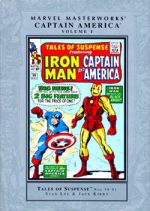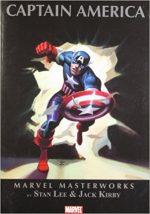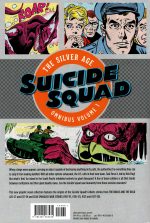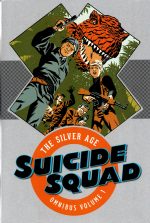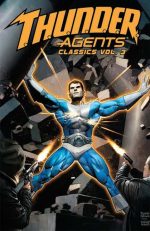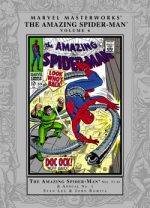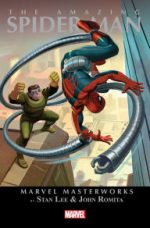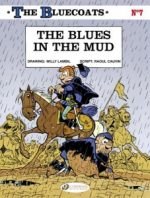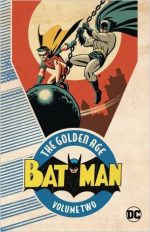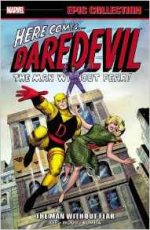
By Derib & Job, coloured by Dominique, translated by Jerome Saincantin (Cinebook)
ISBN: 978-1-84918-318-5
Children’s magazine Le Crapaud à lunettes was founded in 1964 by Swiss journalist André Jobin who then wrote for it under the pseudonym Job. Three years later he hired fellow French-Swiss artist Claude de Ribaupierre who chose the working name “Deribâ€. The illustrator had launched his own career as an assistant at Studio Peyo (home of Les Schtroumpfs), working on Smurfs strips for venerable weekly Spirou. Together they created the splendid Adventures of the Owl Pythagore before striking pure comics gold a few years later with their next collaboration.
Debuting in 1969, Yakari detailed the life of a young Oglala Lakota boy on the Great Plains; sometime after the introduction of horses by the Conquistadores but before the coming of the modern White Man. This year the 39th album was released: a testament to the strip’s evergreen vitality and the brilliance of its creators.
Overflowing with gentle whimsy and heady compassion, Yakari enjoys a largely bucolic existence; at one with nature and generally free from strife. For the sake of our delectation, however, the ever-changing seasons are punctuated with the odd crisis, generally resolved without fuss, fame or fanfare by a little lad who is smart, brave… and can converse with all animals…
Derib – equally at home with enticing, comically dynamic “Marcinelle†cartoon style yarns and devastatingly compelling meta-realistic action illustrated action epics – went on to become one of the Continent’s most prolific and revered creators. It’s a crime that such groundbreaking strips as Celui-qui-est-né-deux-fois, Jo (the first comic ever published dealing with AIDS), Pour toi, Sandra and La Grande Saga Indienne) haven’t been translated into English yet, but we still patiently wait in hope and anticipation…
Many of Derib’s stunning works over the decades feature his cherished Western themes; magnificent geographical backdrops and epic landscapes. Yakari is considered by fans and critics to be the strip which first led him to deserved mega-stardom.
Originally released in 1987, Yakari et les seigneurs des plaines was the 13th European album (and Cinebook’s 14th translated tome), but – as always – the content is both stunningly simple and effectively timeless; offering total enjoyment for a minimum of familiarity or foreknowledge…
This tale, however, has a necessarily dark edge as it deals with how the Sioux subsist and how their staple diet feels about it…
Th drama begins with a crucial tradition as the braves hunt buffalo and culminates with doughty Bare Blade killing a beast with a single merciful blow. As the squaws prepare the carcases – utilising every scrap of them – judiciously taken by the men, the aged chief reminds the gathered tribe of the bad old days when their foolish ancestors wastefully slaughtered far more animals than they needed or could use.
Now thanks to their pact with Great Spirit Wacondah, enlightened modern men have learned to respect the buffalo and only take what is needful…
Awed by the history lesson, little Yakari heads for bed and has another of his special dreams. In it he speaks with the gracious spirit of the cow whose skin he sleeps on every night since the day she died and he was born…
Next morning, still gripped by all things to do with the ponderous lords of the plains, Yakari heads his steed Little Thunder into the heart of the endless herd and makes a few new friends. He is astounded to discover the big beasts bear his kind no resentment and accept the role every creature plays in the life of the world…
Happily consorting with the thousands of blockbusting bovines, Yakari learns sage wisdom from the old bulls and wary lookouts, and even frolics with the sprightly calves as they learn to butt heads in the approved manner, before noticing one heavily pregnant cow lagging behind. Herd master Boulder Brow tells the lad that she will soon leave the morass and give birth somewhere quiet and isolated.
Sadly, an old diseased wolf is keenly aware of the fact and hungrily bides his time…
As the afternoon ends, Yakari heads home and sees the new mother and latest addition to the herd. Stopping to pay his respects, he spots an opportunistic predator making his move and instinctively intervenes with a well-aimed rock. Upon realising that mother and child are too weak to catch up with the ever-proceeding herd, the boy resolves to stay with them, lighting a guard fire to keep the still-stalking wolf at bay…
Eventually the hungry canine can wait no longer but his bold dash only leads to a seared tail and a determination to make boy, buffalo and baby pay for his pain and indignation…
As dawn breaks Yakari sees the herd has gone. As he heads home, mother and child follow their vastly extended family, unaware that the lone wolf has found the local pack and, by lying to them, created a vengeful army ready to avenge grievous insults and feast on deserving victims. The deciding argument was that the human cub was planning to wipe out all the wolves…
The sinister scheme might well have worked had not alert Little Thunder spotted the amassed pack and warned Yakari. Instantly understanding what has happened the little boy turns back towards the buffalo stragglers and arrives just in time to set the record straight with the rather reasonable pack and teach the rogue wolf a lesson…
Exotically enticing, entertainingly educational, compellingly dramatic and joyously inventive, this is a tale which allows Derib full rein to display his astounding artistic ability in a glorious graphic tour de force which captures the scale, power and majesty of the hard-headed hairy nomads. This yarn also shows Job’s big-hearted affection for the period and culture: another visually stunning, seductively smart and happily heart-warming saga to delight young and old alike.
Yakari is one of the most unfailingly absorbing all-ages strip every conceived and should be in every home, right beside Tintin, Uncle Scrooge, Asterix and the Moomins.
Original edition © Le Lombard (Dargaud- Lombard S. A.) 2000 Derib + Job. English translation 2016 © Cinebook Ltd.

